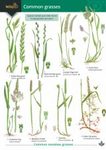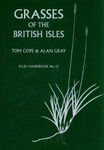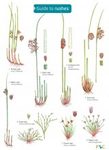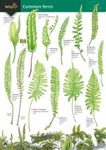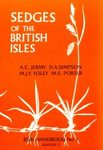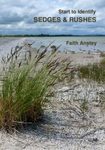By: Anthony Larkum(Editor), Gary Kendrick(Editor), Peter Ralph(Editor)
600 pages, 200 colour & 40 b/w illustrations
![Seagrasses of Australia Seagrasses of Australia]()
Click to have a closer look
About this book
Contents
Customer reviews
Biography
Related titles
About this book
Seagrasses of Australia will take the place of Biology of Seagrasses: A Treatise on the Biology of Seagrasses with Special Reference to the Australasian Region, which was published by Elsevier in 1989. It is now 25 years since it was published and seagrass studies have progressed and developed considerably since then.
Seagrasses of Australia contains chapters on taxonomy, floral biology, biogeography and regional study. The regional studies emphasise the importance of Australia having over half of the world's 62 species, including some ten species published for Australia since the previous book. There are a number of chapters on ecological issues including the decision of Australian seagrasses into tropical and temperate species and their interactions, Fisheries and dugong biology are given an important presence. Physiological aspects are an important part, including new knowledge on the role of hydrogen sulphide in sediments and on photosynthetic processes. Pollution and environmental degradation form another important part of Seagrasses of Australia. The decline of seagrasses around Australia is dealt with in detail.
Two new areas that receive special attention are blue carbon and genomic studies. Seagrasses are now known to be a very important player in the formation of blue carbon, i.e. carbon that has a long turnover time in soils and sediments. Alongside salt marshes and mangroves, seagrasses are now known to play a very important role in the formation of blue carbon. And because Australia has such an abundance and variety of seagrasses, their role in blue carbon production and turnover is of great importance. The first whole genomes of seagrasses are now being produced and Australia has played an important role here. It appears that seagrasses have several different suites of genes as compared with (land) plants and even in comparison with freshwater hydrophytes. This difference is leading to important molecular biological studies where this new knowledge is important to the understanding and conservation of seagrass ecosystems in Australia. Therefore this area is given prominence in Seagrasses of Australia.
Contents
A. Biogeography
1. Evolution and Biogeography of Australian Seagrasses; Anthony Larkum et al.
2. Biogeography of Australian seagrasses NSW, Victoria, Tasmania and temperate Queensland; Peter Macreadie et al.
3. Seagrasses of southern and south-western Australia; Kieryn Kilminster et al.
B. Taxonomy and Anatomy
4. Anatomy and Structure of Australian Seagrasses; John Kuo et al.
C. Molecular and Taxonomic Studies
5. Systematics and evolution of Australian seagrasses in a global context; Michelle Waycott et al.
6. Genetic Connectivity in Tropical and Temperate Australian Seagrass Species; Kathryn McMahon et al.
D. Ecology
7. Seagrass dynamics and resilience; Rod Connolly et al.
8. Reproductive, Dispersal and Recruitment Strategies in Australian Seagrasses; Craig Sherman et al.
9. Australian Seagrass Seascapes: present understanding and future research directions; Gary A. Kendrick et al.
10. Seagrass resistance to light deprivation: implications for resilience; Katherine O'Brien et al.
E. Physiology
11. Photosynthesis and Metabolism; Anthony Larkum et al.
12. Microbiology of Seagrass habitats; Justin Seymour et a.l
13. Rhizome, Root/Sediment interactions, Aerenchyma and Internal Pressure Changes in Australian Seagrasses; Kasper Elgetti Brodersen et al.
14. Seagrasses in the south-east Australian region - distribution, metabolism, and morphology in response to hydrodynamic, substrate, and water quality stressors; Angus Ferguson et al.
15. Mapping, Monitoring and Modelling Seagrass; Stuart Phinn et al.
F. Fauna
16. The role of consumers in structuring seagrass communities: direct and indirect mechanisms; Robert J Nowicki et al.
17. Faunal Assemblages of Seagrass Ecosystems; Paul York et al.
18. The roles of seagrasses in structuring associated fish assemblages and fisheries; Glenn Hyndes et al.
19. Dugongs: Seagrass community specialists; Helene Marsh et al.
G. Pollution & Global Climate Change
20. Decline and Restoration Ecology of Australian Seagrasses; John Statton et al.
21. Global Warming and Ocean Acidification: Effects on Australian Seagrass Ecosystems; Ylva Olsen et al.
22. Estimating seagrass blue carbon and policy implications: the Australian perspective; Peter J Ralph et al.
23. Conclusions
Appendix: Taxonomy of Australian Seagrasses; John Kuo et al.
Index
Customer Reviews
Biography
Professor Tony Larkum's early work was concerned with the processes of ion uptake in roots and giant algal cells. However, his interest in sub-aquatic physiology led increasingly to programs involving algae and seagrasses. More recently, much of his research effort in this area has been devoted to photoinhibition and UV inhibition of algae and corals including algae in coral reefs and coral bleaching mechanisms and since 1997 his major work has been devoted to understanding the phenomenon of mass coral bleaching, which has been linked to increase in surface sea temperatures and thus to global warming.In addition he has been interested in novel cyanobacteria, such as Acaryochloris, which have novel chlorophylls capable of absorbing near infra-red light.
Professor Gary Kendrick is a marine plant ecologist who is passionate about understanding how we both can protect and use our rich marine environments. He has multiple interests including understanding biodiversity and ecology of temperate and tropical seagrass meadows and reefs, conservation and restoration of marine foundation species, and educating people about coastal and marine ecosystems. His experimental work on the ecology of seagrass meadows, kelp and Sargassum beds includes understanding the role of seagrasses and kelps in structuring communities, herbivory in seagrass meadows and reefs, and the effect of ocean warming and human impacts on the resilience of seagrasses and macroalgae. Professor Kendrick has recently focussed on dispersal and recruitment ecology, and genetics of seagrasses, has measured and modelled the dispersal of seagrass seeds and documented seedling survival.
Professor Peter Ralph is a Professor of Marine Biology at UTS, and Executive Director of the Climate Change Cluster (C3) in the Faculty of Science. He is also founder of the Deep Green Biotech Hub, member of the IOC-UNESCO Blue Carbon International Scientific Working Group and former leader of the CSIRO Marine and Coastal Carbon Biogeochemistry Cluster. Within C3, he leads two research programs: Algae Biosystems and Biotechnology, and Seagrass Health.
By: Anthony Larkum(Editor), Gary Kendrick(Editor), Peter Ralph(Editor)
600 pages, 200 colour & 40 b/w illustrations















